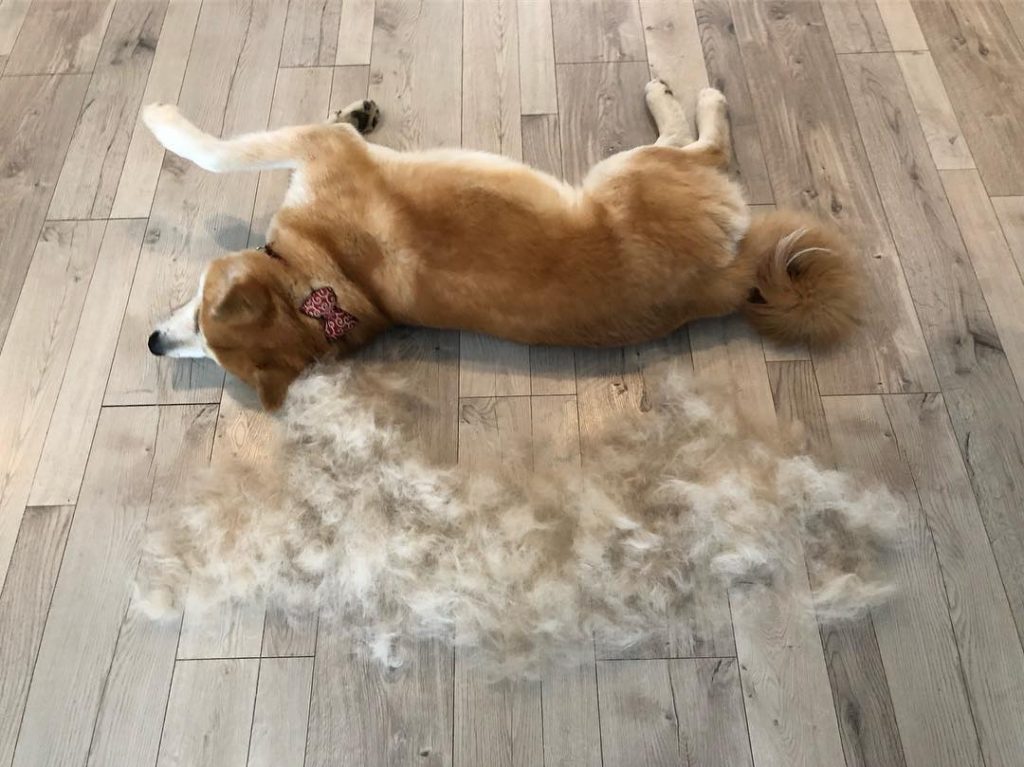Dog moulting
The moult is a normal physiological phenomenon which consists in punctually renewing the external appearance by abandoning the remains of the old appearance. A snake that moults renews its skin, its external envelope, a dog that moults renews its coat. It is because of the moult that we can find a lot of dog hair at home...
Moulting in dogs: regular or accentuated hair loss
Dogs' hair grows, then dies and falls out all the time. However, this phenomenon is accentuated twice a year: in the spring and in the fall when there are big changes in temperature and sunlight (length of days).
In the spring, the shedding is often very intense: the dog loses its winter hair and the coat becomes lighter.
In autumn, the moult precedes the densification of the hair into winter hair, the hair becomes longer and denser.
The moult is different from one dog to another depending on its breed. Indeed, some breeds hardly shed at all, like poodles, while others, like huskies, have a very important undercoat in winter and the hair loss during climate changes can be impressive!
The dog's lifestyle can also influence shedding: dogs living indoors (heated and lit) tend to lose their hair all year round because climate changes are less noticeable...
Of course, excessive hair loss can be a sign of disease. Associated with pimples or patches on the skin, a pruritus causes a hair loss also important, there is then certainly a dermatological affection (parasite, infection, allergy...). Some endocrine diseases also cause hair loss in abnormal patches (often on the flanks and symmetrically).
A particularly marked shedding can also be a sign of a diet that is not well suited to the dog (the higher the quality of the food and the more adapted to your dog, the less hair loss it will experience). A food rich in good fatty acids and vitamins promotes a good quality coat and therefore reduces shedding.
How to avoid having dog hair everywhere?
It is impossible to prevent shedding, as it is a natural phenomenon.
However, it is possible to help the dog shed more quickly and thus promote the regrowth of the new coat.
When the dog moults all year long (if he lives indoors, heated and lit), you may have to vacuum every day to avoid being invaded by hair...
Here are some tips to try to limit this phenomenon, although it can't be prevented:
- Food plays a real role on the health of the coat, give a food enriched in omega 3 and balanced in vitamins. You can also give food supplements for the coat, salmon oil (rich in omega 3), rapeseed oil...
- Brush your dog very regularly, if possible every day, with an adapted brush. This will remove dead hair more quickly and avoid the formation of knots/clumps in the hair. It is interesting to get your dog used to being brushed at a very young age, this moment will become a real pleasure and a moment of complicity between you. Always brush in the direction of the hair.
- Don't wash your dog too much (maximum once a month or if necessary if he gets really dirty) and only with a shampoo adapted to dogs. Human shampoos or washing gels, even for babies, damage the skin of dogs, and therefore encourage hair loss.
- Limit your dog's stress, as intense stress can lead to hair loss (at the vet's, for example, it is common for animals to lose their hair in clumps).

